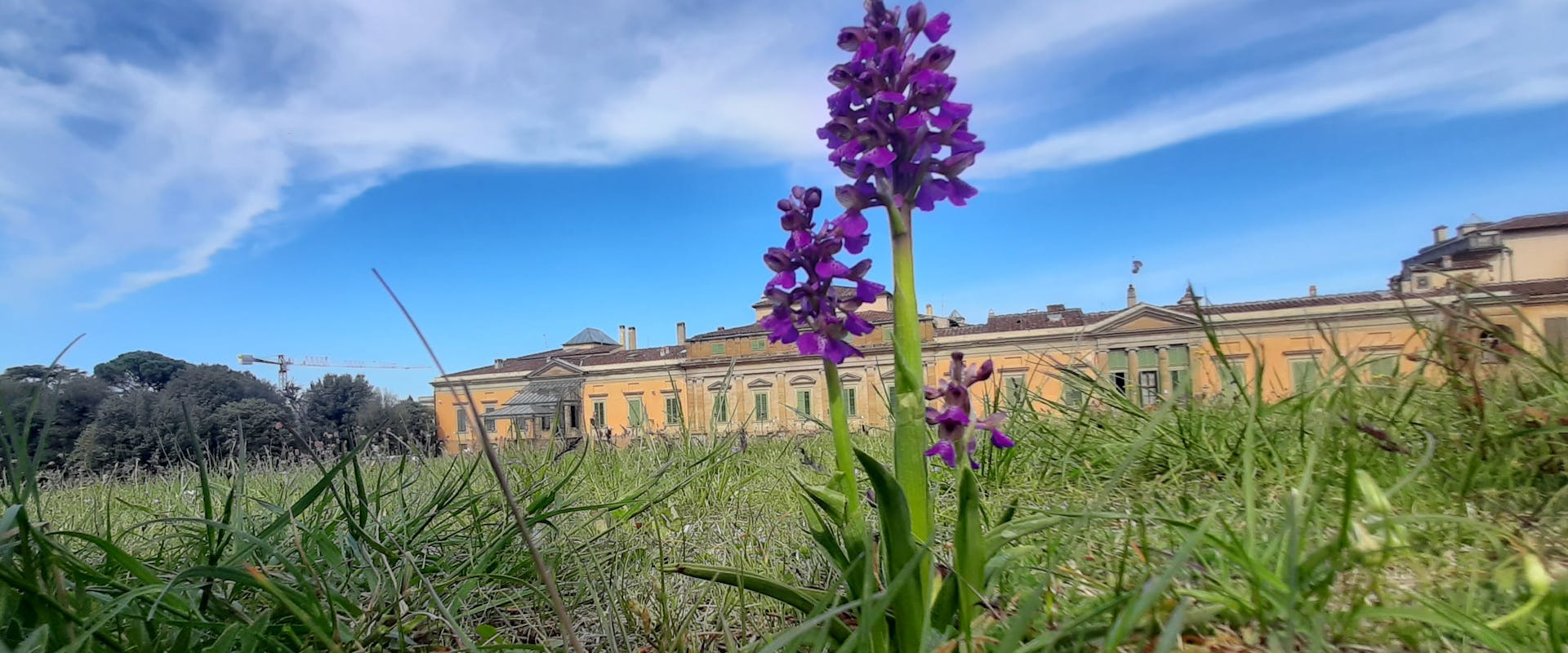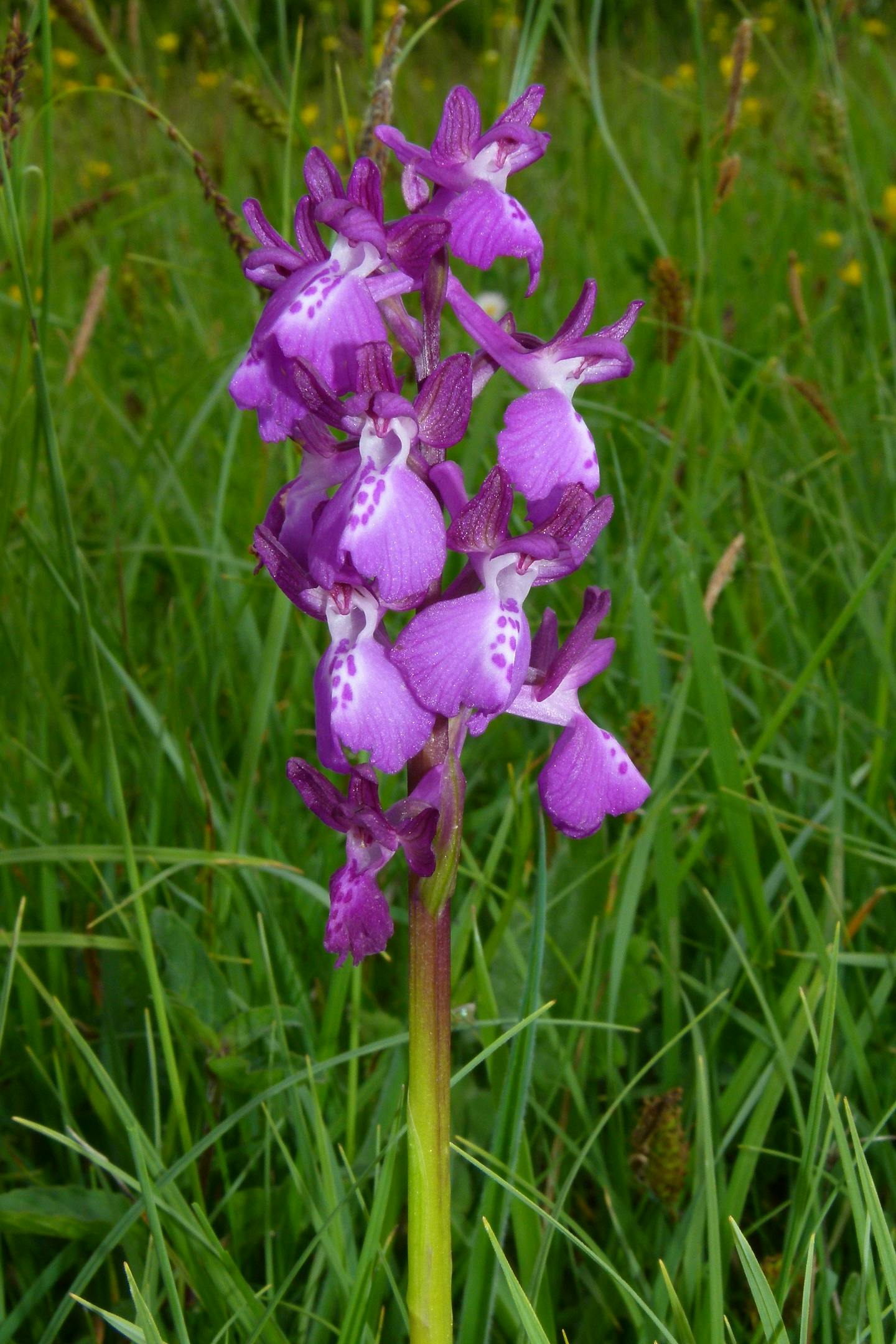Wild orchids in the Boboli Gardens
The rich population of wild orchids is an indication of the health of the park's ecosystem
Since 2018 the collaboration between the Uffizi Galleries and GIROS (Italian Group for Research on Spontaneous Orchids) has enabled the census, protection and enhancement of wild orchids in the Boboli Gardens.
Indeed the inventory of wild orchids brought to light in the garden of the Grand Duchy palace until spring 2023 is made up of no less than 2300 plants, belonging to 24 taxa divided in 9 genres: 20 species, 3 colour varieties and one natural hybrid, identified and described in Boboli for the first time and therefore named Ophrys ×bobolensis. The genres represented are: Anacamptis, Cephalanthera, Epipactis, Ophrys, Orchis, Serapias and Spiranthes. Such a varied and rich presence in the meadows and groves of an Italian-style garden located in the historic centre of Florence, visited by thousands of visitors every year, is evidence of an environment that is optimally preserved and in good health.
The studies began with bibliographic and herbarium research that documented the first discovery of Orchidaceae in Boboli in 1716, as recorded in the manuscripts of illustrious botanist Pier Antonio Micheli, preserved in the Library of the Institute of Botany at the University of Florence. The garden also boasts an important record: on a sample of a white Anacamptis morio collected here in the second half of the 19th century, in 2009 was created the morio forma alba subspecies. Together with the specimens collected in the Garden by ten botanists from 1854 to 1912, the plant is preserved at the Herbarium Centrale Italicum in Florence.
The ecology of Orchidaceae is complex: it is not enough for the fertilised seed to fall on the ground to have a chance of giving birth to a new plant, as it needs to enter into symbiosis with micro fungi in the soil in order to provide the nutrients for the seed, without which the seed will never germinate. It will then take 3 to 12 years for a seedling to form from the seed and for it to bloom. These are two of the reasons why wild orchids are indebted to “old” soils that go untilled for many years, and where the integrity of the fungus and the developing underground roots are preserved: indeed, it is completely useless to transfer wild orchid seedlings into a pot or home garden, as they will not survive.
Orchids reproduce mainly with the help of insects, usually small wasps and some genera of solitary bees and, only occasionally, diurnal and nocturnal butterflies, beetles and ants. Pollinators may in fact be specific, occasional or simple visitors. The latter use the flower as a perch or shelter for the night and in bad weather, or to preserve their body temperature. The purpose of flowers is to force the insect to come into contact with sticky structures containing pollen, which sticks to the insect’s body and is deposited in the right position on another flower. Wild orchid flowers attract a variety of different insects. In some cases, the attraction is triggered by the production of nectar, which is located in a poorly accessible area of the flower, so the insect definitely comes into contact with the pollen and removes it. In other cases, the plant implements a “deceptive” strategy: some genera of orchids simply mimic the shape of other flowers that produce nectar, deceiving the hungry insect. Still other orchids, since the pollinator is the male insect, mimic the female through odour stimuli (even more intense than natural ones) and with the very shape of the flower resembling the body of the female insect.
The importance of an environment that not only keeps the natural balance of the soil intact, but does not harm the life of insects, which is essential for the survival of the Orchidaceae family, is therefore reaffirmed in a broad sense.
The “Italian garden” , as we know, is characterised by strict geometries and well-shorn lawns. During your visit to Boboli, you may encounter small areas with markers and fences delimiting portions of the lawn left “au naturel”. These are conservation areas reserved to precious orchids, and whose aim is to preserve the small plants from spring cuttings and to promote pollination and seed production. After this stage, the lawn will be cut like all the others and this will be a valuable aid for the dissemination of thousands of small seeds that will hopefully be lucky enough to find the right fungus in the soil to continue their story.
In the natural environment, climate change and many other factors, both human and non-human (in particular, the abnormal proliferation of wild boar), are putting a strain on the life of many grassland and undergrowth species. With this in mind, the reservoir of biodiversity constituted by historic parks and gardens, such as the Boboli Gardens, may be a concrete hope for the survival of many plant species and the fascinating family of wild orchids in the future.

